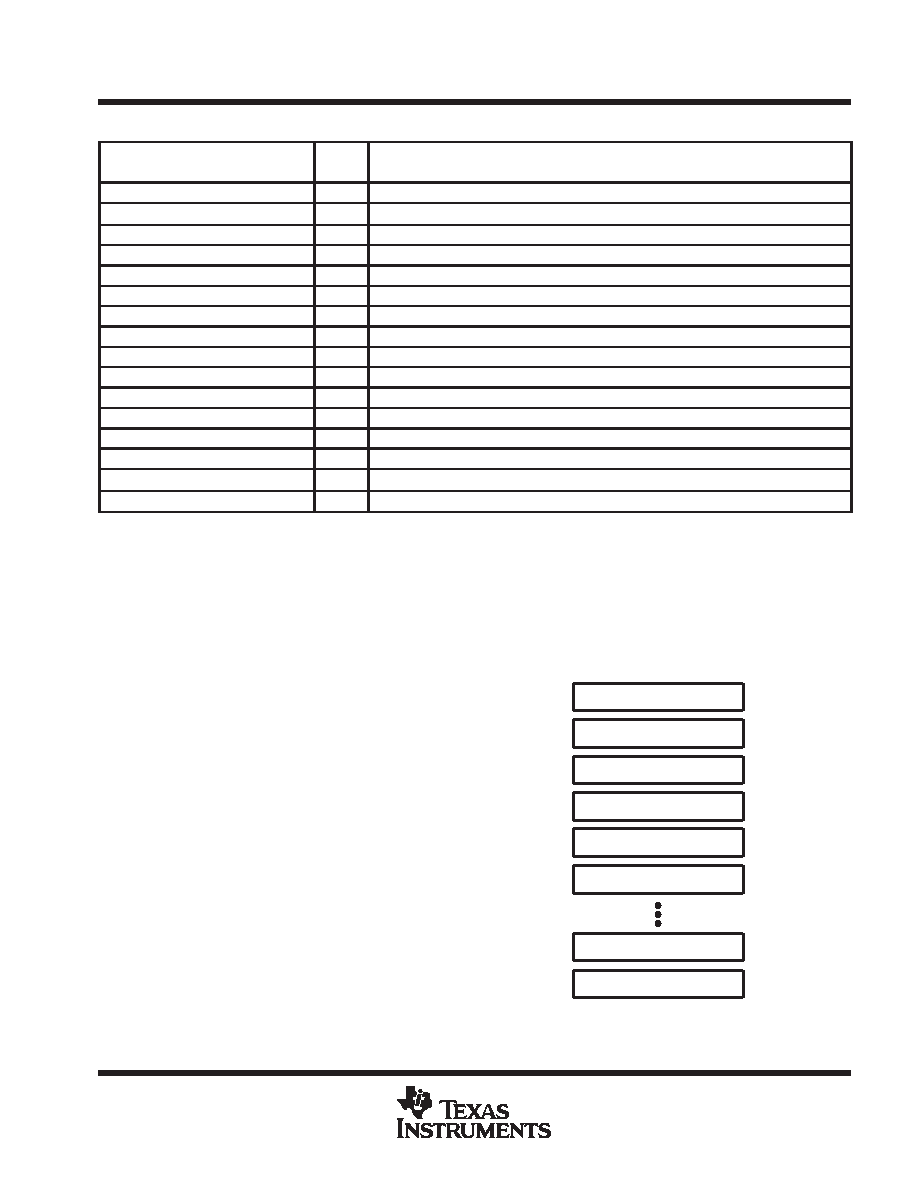- 您現(xiàn)在的位置:買賣IC網(wǎng) > PDF目錄69040 > MSP430C336IPJM (TEXAS INSTRUMENTS INC) 16-BIT, MROM, 3.8 MHz, RISC MICROCONTROLLER, PQFP100 PDF資料下載
參數(shù)資料
| 型號: | MSP430C336IPJM |
| 廠商: | TEXAS INSTRUMENTS INC |
| 元件分類: | 微控制器/微處理器 |
| 英文描述: | 16-BIT, MROM, 3.8 MHz, RISC MICROCONTROLLER, PQFP100 |
| 封裝: | PLASTIC, MS-022, QFP-100 |
| 文件頁數(shù): | 38/42頁 |
| 文件大?。?/td> | 637K |
| 代理商: | MSP430C336IPJM |
第1頁第2頁第3頁第4頁第5頁第6頁第7頁第8頁第9頁第10頁第11頁第12頁第13頁第14頁第15頁第16頁第17頁第18頁第19頁第20頁第21頁第22頁第23頁第24頁第25頁第26頁第27頁第28頁第29頁第30頁第31頁第32頁第33頁第34頁第35頁第36頁第37頁當(dāng)前第38頁第39頁第40頁第41頁第42頁

MSP430C33x, MSP430P337A
MIXED SIGNAL MICROCONTROLLERS
SLAS227A – OCTOBER 1999 – REVISED JUNE 2000
5
POST OFFICE BOX 655303
DALLAS, TEXAS 75265
Terminal Functions (Continued)
TERMINAL
I/O
DESCRIPTION
NAME
NO.
I/O
DESCRIPTION
TMS
94
I
Test mode select. TMS is used as an input port for device programming and test.
TDO/TDI
92
I/O
Test data output port. TDO/TDI data output or programming data input terminal
TP0.0
3
O
General-purpose 3-state digital output port, bit 0 – Timer/Port
TP0.1
4
O
General-purpose 3-state digital output port, bit 1 – Timer/Port
TP0.2
5
O
General-purpose 3-state digital output port, bit 2 – Timer/Port
TP0.3
6
O
General-purpose 3-state digital output port, bit 3 – Timer/Port
TP0.4
7
O
General-purpose 3-state digital output port, bit 4 – Timer/Port
TP0.5
8
I/O
General-purpose 3-state digital input/output port, bit 5 – Timer/Port
VCC1
1
Positive supply voltage
VCC2
29
Positive supply voltage
VSS1
100
Ground reference
VSS2
28
Ground reference
VSS3
52
Ground reference
XBUF
97
O
System clock (MCLK) or crystal clock (ACLK) output
Xin
99
I
Input port for crystal oscillator
Xout/TCLK
98
I/O
Output terminal of crystal oscillator or test clock input
detailed description
processing unit
The processing unit is based on a consistent and orthogonal designed CPU and instruction set. This design
structure results in a RISC-like architecture, highly transparent to the application development, which is
distinguished by ease of programming. All operations other than program-flow instructions consequently are
performed as register operations in conjunction with seven addressing modes for source and four modes for
destination operand.
CPU registers
The CPU has sixteen registers that provide
reduced instruction execution time. This reduces
the register-to-register operation execution time
to one cycle of the processor frequency.
Four of the registers are reserved for special use
as a program counter, a stack pointer, a status
register, and a constant generator. The remaining
registers are available as general-purpose regis-
ters.
Peripherals are connected to the CPU using a
data address and control bus and can be handled
easily with all instructions for memory manipula-
tion.
Program Counter
General-Purpose Register
PC/R0
Stack Pointer
SP/R1
Status Register
SR/CG1/R2
Constant Generator
CG2/R3
R4
General-Purpose Register
R5
General-Purpose Register
R14
General-Purpose Register
R15
相關(guān)PDF資料 |
PDF描述 |
|---|---|
| MSP430F5342IRGZ | RISC MICROCONTROLLER, PQCC48 |
| MSP430F5341IRGZT | RISC MICROCONTROLLER, PQCC48 |
| MSP430F5514IRGC | 16-BIT, FLASH, 25 MHz, RISC MICROCONTROLLER, PQCC64 |
| MSP430F5528IRGC | 16-BIT, FLASH, 25 MHz, RISC MICROCONTROLLER, PQCC64 |
| MSP430F5522IRGC | 16-BIT, FLASH, 25 MHz, RISC MICROCONTROLLER, PQCC64 |
相關(guān)代理商/技術(shù)參數(shù) |
參數(shù)描述 |
|---|---|
| MSP430C336PJM | 制造商:TI 制造商全稱:Texas Instruments 功能描述:MIXED SIGNAL MICROCONTROLLERS |
| MSP430C337 | 制造商:TI 制造商全稱:Texas Instruments 功能描述:MIXED SIGNAL MICROCONTROLLERS |
| MSP430C337HFD | 制造商:TI 制造商全稱:Texas Instruments 功能描述:MIXED SIGNAL MICROCONTROLLERS |
| MSP430C337IPJM | 制造商:TI 制造商全稱:Texas Instruments 功能描述:MIXED SIGNAL MICROCONTROLLERS |
| MSP430C337PJM | 制造商:TI 制造商全稱:Texas Instruments 功能描述:MIXED SIGNAL MICROCONTROLLERS |
發(fā)布緊急采購,3分鐘左右您將得到回復(fù)。